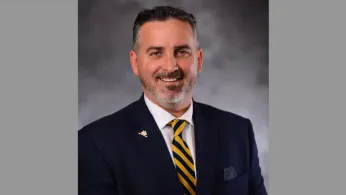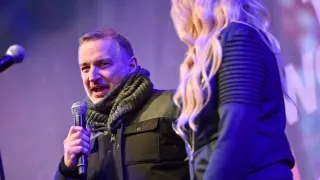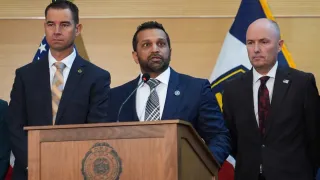
6 hours ago
Oregon State Rep. Cyrus Javadi Switches to Democratic Party After Facing Backlash Over Support for Gay Son, Inclusive Books
READ TIME: 3 MIN.
Oregon State Representative Cyrus Javadi, who has served the North Coast region since 2022, announced last week that he is leaving the Republican Party and will run for re-election as a Democrat. The decision follows months of growing tension within Oregon’s GOP, spurred by Javadi’s willingness to support bipartisan legislation and his vocal advocacy for his gay son in the face of rising anti-LGBTQ+ rhetoric among some Republican circles.
The signs of Javadi’s departure from Republican orthodoxy were visible over the last year. He was the only Republican in the Oregon House to vote in favor of a critical transportation funding bill during a special legislative session, breaking with GOP colleagues who opposed the measure . Javadi also sided with Democrats on legislation aimed at curbing library book bans, a move that drew ire from conservative activists and legislators who argued the bills undermined parental rights.
In a televised interview, Javadi stated, “The Republican Party is not about governing, it’s about burning things down. The Democratic Party supported efforts that aligned with my values, like protecting rural health care, ensuring access to doctors for children, and allowing people to read books that reflect who they are."
Javadi’s decision came in the wake of an intensifying backlash from some members of the Republican Party and online communities after he publicly supported his gay son. While discussing his son’s experience and the importance of affirming LGBTQ+ youth, Javadi underscored his commitment to inclusion and respect for all families—regardless of sexual orientation or gender identity .
“Seeing the way my son and other LGBTQ+ youth are treated—sometimes even by people in power—compelled me to stand up for what is right, even when it’s politically inconvenient,” Javadi said during a recent broadcast interview. “No parent should have to choose between their love for their child and their political career."
Javadi’s support for his son became a flashpoint for criticism from conservative activists, some of whom accused him of betraying the party’s core values. The legislator, however, maintains that it is the party that has shifted, not him: “I don’t feel like I’ve betrayed the party. The party left me,” he told viewers .
The move has generated strong reactions on both sides of the aisle. Several Republican leaders have denounced Javadi as a “traitor,” while Democratic officials and LGBTQ+ advocacy organizations have welcomed him, praising his courage and integrity in the face of political pressure .
Political analysts say the switch could signal a broader trend as moderate lawmakers nationwide struggle to reconcile their personal convictions with an increasingly polarized political climate. “What we’re seeing is a microcosm of a much larger debate. For LGBTQ+ families in particular, representation and vocal support from elected officials are crucial,” said Dr. Lisa Raymond, a political scientist at Portland State University .
Javadi’s switch comes at a time when LGBTQ+ rights are facing renewed challenges in state legislatures across the U.S. According to recent reports, bills targeting LGBTQ+ youth—ranging from sports participation bans to restrictions on healthcare—have surged in the last two years . Against this backdrop, elected officials who publicly affirm LGBTQ+ identities and challenge discriminatory rhetoric play an increasingly vital role.
For many in Oregon’s LGBTQ+ community, Javadi’s public stance is not only a political statement but a deeply personal affirmation. “Visibility matters,” said Maria Hernandez, a Portland-based LGBTQ+ youth counselor. “When lawmakers like Rep. Javadi speak openly about loving and supporting their gay children, it sends a powerful message that every family deserves dignity and respect."






